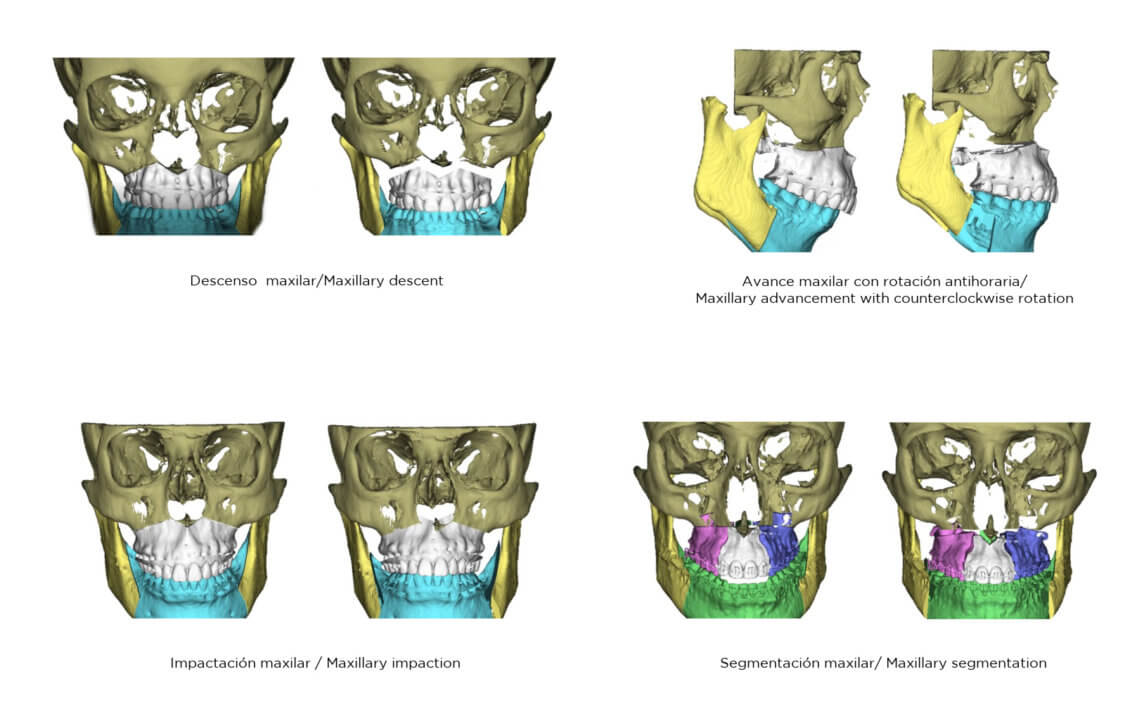Orthofacial surgery has a double objective: to achieve a functional improvement of the maxillo-mandibular complex, and at the same time, an aesthetic improvement of the patient's face, but what kind of changes can we expect in our face after this type of surgery?
The answer depends on the type of surgery you have to undergo: either a surgery of the maxilla, of the lower jaw, or a bimaxillary surgery (both maxilla and mandible).
Let's break this down:

- With a mandibular advancement, we achieve greater support at the soft tissue level and therefore more definition of the jaw, in addition to a decrease in the hanging skin under the chin (due to its stretching).
- With mandibular rotation, the length of the face can vary: it can look more or less elongated.
- A mandibular centering will help to harmonize the face in cases of facial asymmetry.
As for the maxilla, there are many variations of movements with different results:

- A maxillary impaction (shortening) will shorten the distance between the mouth and the nose, that is why this movement is used to correct gummy smile in many cases.
- A maxillary descent will have the opposite effect. Its mainly used in cases of short face to lengthen the face.
- A maxillary advancement with counter-clockwise rotation is mainly used in cases of maxillary hypoplasia (flat face) and produces the effect of a fuller face in the middle third. In addition, by advancing the maxilla, the distance between it and the tip of the nose is reduced, giving the appearance of a smaller nose, even if it has not been touched in surgery. The lips will also look fuller.
- A segmentation of the maxilla is mainly used to close an open bite, or correct asymmetries and achieve a more balanced profile.
It should also be taken into consideration that in most cases in which the maxilla is mobilized, a projection of the tip of the nose occurs, which can be corrected during the same surgery if it is not beneficial for the aesthetic outcome of the patient.
Finally, maxillary movements also tend to cause a widening of the nostrils, but in our center, thanks to a technique designed and published by Prof. Hernandez Alfaro and his research team, a special suture (nasal strap) is performed that makes that the shape of the nose does not change in any way.
The maxillofacial surgeon specialized in orthofacial surgery will plan keeping in mind the whole of the face, so it is very possible that they will propose ancillary procedures to achieve greater harmony of the face, such as genioplasty, rhinoplasty, lifting or fillings, to be done during the same surgery to achieve optimala esthetic results. Thus, depending on the surgical plan of our specialist, we can combine the different movements listed above to get an approximate idea of the type of change that we can expect in our face, always bearing in mind that the muscles and soft tissues are (and react) differently in each person, so the results can vary enormously from person to person.
Related content:
Expectations in orthognathic surgery: how to avoid disappointment
Changes in the nose after orthognathic surgery
I don’t like my face after my orthognathic surgery








